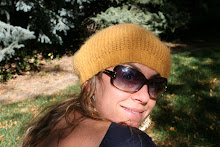
You may remember from last week that a few of the older boys posed an interesting question, "How long can you make a line?". There were alot of theories and ideas for possible experiments to explore this idea. A popular experiment centered around chalk and sidewalks. So this afternoon, armed with sidewalk chalk, a camera and a clipboard for recording data. I invited the same group of boys who orginally posed the question to be the first to try out thier experiment. After a short discussion outlining some safety precautions, they decided to begin at the most northern corner of the sidewalk in front of the school. They each wrote thier names and began
drawing a line. One student made zigzag lines, one made staggered lines, another made "water" lines and the last sped down the sidewalk trailing chalk with enthusiasm. After about 20 minutes of drawing and several pieces of blunted chalk the students were exhausted and finished. We then decided to measure the lines and after some discussion we agreed on counting the segmented sidewalk squares. The longest line terminated in the sixty-first square. We sat under a crab apple tree surrounded by fruit and discussed our findings. They agreed that drawing a line was harder than they first imagined, but still expressed the merits of drawing a line to the nearest ocean or to Australia, or Antarctica. They left, thirsty and tired, to return to the classroom.

The next students who decided to join the line experiment happened to be a group of four girls. These girls exchanged shoes for slippers and followed me outside. We used the same protocol and discussed safety before deciding on our starting point. The girls were eager to begin drawing at the same spot the boys chose, with an obvious interest in out distancing the "boys". After fifteen minutes the girls were visibly hot and tired. They expressed their frustration at not having made a line as long as the line one of the boys had made. We counted the squares in their lines and discovered that the longest line was thirty-five squares. We too sat beneath the crabapple tree to reflect. At no time did I ever compare the two groups work or make any suggestions. I listened actively to their frustration and asked, "Do you think you might be able to make a longer line some other day, when you are less tired?" and "How?". Soon two of the girls excitedly exclaimed "We could work together!"
One girl said, "Yeah you could work on my line!""
Another countered, "No you could work on my line!"
This continued for a while until another member of the group suggested, "What if we worked on the longest line together!"
They unanimously turned to me and said, "Can we do it now!"
I asked if they were too tired and they assured me they were not. I offered the bucket of chalk and they were off.


Soon they were working as a team with one child running ahead to make a portion of the line and another working to connect the segments. They made the chalk line a full city block long and a total of one hundred and six squares. They were visibly excited, proud and invigorated. When we reflected on the process they were eager to announce "We won!". I said, "I'm not sure we were competing against anyone, BUT we did learn that you can do a lot more than you ever thought possible when you work together". Smiling, arm in arm, they returned to their classroom, empowered.

No comments:
Post a Comment